Sleek, black and rarely seen; the submarine Le Redoutable is the most powerful weapons carrier man has ever produced. Nothing comes close to it for fire power not even the mighty American aircraft carriers.
For over half a century these dark menacing machines have been prowling the depths of every ocean on earth awaiting the order to fire.
Today only six countries have submarines armed with submarine launched ballistic missiles, they are the United States, Russia, France, China, United Kingdom and the newest member India.
Each has a varying level of capability and arsenals – joint top of that list is the United States and Russia.
Le Redoutable: Mission Impossible?
Today my good friend Jo and I will be departing England for a round trip of 1150 miles to France via Belgium. During this trip we will cover two thirds of northern France in a Mitsubishi Warrior pick-up truck.
Our goal? To visit the only publicly displayed nuclear missile carrying submarine in the world and due to work constraints, we have only 48 hours in which to achieve this mission. Crazy!
Located just 40km from the D Day beach Utah, is the city of Cherbourg. This city has lots of maritime and military history. In 1912 RMS Titanic called here, on June 6th, 1944, the American 4th infantry division landed on the Cherbourg peninsular and today Cherbourg houses the Le Redoutable.
Le Redoutable is the first of her class and the first French built nuclear powered ballistic missile submarine.
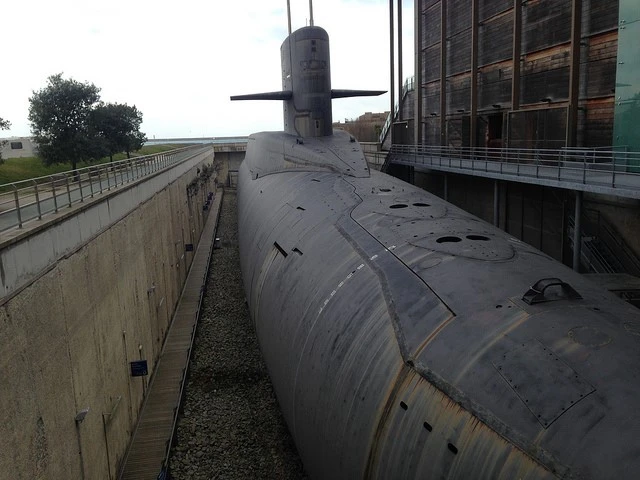

Introduction to the Submarine
Laid down in November 1964 and launched in March 1967, Le Redoutable was finally commissioned in December 1971 in a class of six submarines. They would go on to provide France’s deterrent at sea for over three decades.
Decommissioned in December 1991, she would be laid up until 2000 when she was moved again. This time to remove her reactor compartment and insert a steel plug.
Her 7,000ton bulk had to be lifted out of the water and placed inside a specially built dry dock. Today it is possible to see every inch of the boat. If she had been in the water, like an iceberg, she would be partially hidden with only two thirds of the submarine visible.
Approaching the submarine, you get a sense of just how big this boat is. At 140 metres long, 10.5 metres wide and a draught of 10 metres, you would think that that’s plenty of space for the 135 crew. Let’s take a look inside and find out.
Inside – Le Redoutable
We start our journey inside but unlike many other maritime museums we start aft not forward. The first place we come to is the aft engineering room.
Here the single GWC PKR K15 16,000shp nuclear reactor produced steam to turn the turbines and gear box, which in turn made the single seven skew bladed propeller turn to propel the boat.
With a maximum speed of around 30 knots, conditions are spacious (although it would be cramped for anyone who has claustrophobia). Jo being a nimble 22 stone (140kg) can still squeeze himself between the tight gaps and as you can see machinery is haphazardly placed.
Speed and Operation
In reality, the submarine herself would rarely move fast. Her mission was to hide in the ocean and await orders to fire her missiles on pre-determined targets.
The French President had no idea where she would be at any given time nor did the chief of naval staff. The only people who knew of her exact location were on board the submarine and even then, it was not the entire crew. The exact location was known by just four people.


The last bulk head aft; the yellow tube on the deck is the propeller shaft.


A view of the entrance door cut into the hull, filling most of the shot is the single main gear box which is connected to the shaft.
The typical speed of a boomer on station is slightly above walking pace at around four to five knots. At this speed the amount of noise created by the propeller is minimal, the seven blades have to turn less often than a four or five bladed propeller.
The diameter of the propeller is also important – the screw on Le Redoutable is some 30 feet across meaning to achieve four or five knots the screw would turn around 45 revolutions per minute.
Looking back (as in the picture) you get a real idea that this is probably what a torpedo will hit first or at least underneath if it’s wake homing. This compartment at the time of taking the picture had around four people in it, but the area itself when operational could hold as many as twenty-five people, which would make this confined area feel even smaller.
Question of Speed – Why So Slow?
The deeper a submarine goes the less risk it has of a phenomenon called cavitation.
Cavitation is where the blade is spinning so fast that it creates low pressure around the edges and tips which causes the surrounding water to boil. The bursting of the oxygen bubbles given off by the boiling water creates sound and it also damages (minutely) the propeller blades.
Importantly, this phenomenon leaves a trail in the ocean that can last for hours or even days and cavitation can be heard thousands of miles away with the right equipment.
An example of this is when a Russian alfa class submarine was detected coming off the North Cape at forty knots heading for the Atlantic Ocean. Her noise trail was detected in Bermuda.
Cavitation and Depth
Cavitation only really occurs in the shallow depths and with the increase in atmospheric pressure from diving deeper the risk reduces. The equation is for every ten meters you dive you increase the pressure by one bar.
Anyway, I have digressed, back to our tour of Le Redoutable!
Venturing Further into Le Redoutable
Forward we go and into the machinery spaces.


If you thought it was a bit cramped in the aft machinery compartment, the machinery space will really give you the sense of being squashed and enclosed.
In this compartment we can see the osmosis and electrolysis plants as well as back up diesel engines. The osmosis plant would provide fresh water from sea water for the crew to wash, cook and drink.
The Electrolysis Plant
Another key element is the electrolysis plant as these make oxygen from sea water by passing an electrical charge through the water and separating the hydrogen molecules from the oxygen molecules. The excess hydrogen is then dumped overboard while the oxygen is circulated around the boat.
When measured for particulate matter it turns out the air on a nuclear submarine is much cleaner than the air we breathe on the street, due to its low pollutant levels.
Submerged for Months on Le Redoutable
One of the most impressive features of a nuclear submarine is the fact it can remain submerged for months at a time; limited only by its food supply. An entire mission will be made completely independent of the surface and may last anywhere from a few days to six or seven months.
The reason it can do this is because the nuclear reactor produces so much power it can power the osmosis plants, electrolysis equipment and the entire boat on a daily basis. In fact, the single nuclear reactor gives out enough energy to power a small town.


The control room oversees everything from the submarines speed to the amount of power the egg whisk has in the kitchen.
The Nuclear Reactor
Moving forward we enter a blank open void, which is particularly handy if you’re uncomfortable in confined spaces. You can catch your breath here while a film is playing on the bulkhead showing how they turned the boat into a museum.
Incidentally, where we are standing used to be where the nuclear reactor once was prior to its removal because it is still a classified top secret. Another pertinent reason for its complete removal of course is that it contained many kilos of spent uranium fuel which is radioactive.
This compartment would normally be off limits in a live submarine, but for tourists, this is the biggest section of open space, so we paused to get our bearings and then kept moving.
The Missile Room
Forward we go and into the next section, and we’re stood in the compartment that is the entire reason for this boat’s existence. Spanning two inner and one outer deck these white cylinders (sixteen in total) once housed a weapon of awesome power.
The Missiles – Le Redoutable


This is the missile section. Here a crew of specialists would care for their deadly cargo 24 hours a day, 7 days a week. Checking and re-checking every few hours ensuring that France had a ready and capable retaliation weapon. This area made me stop and think about the awesome fire power in this one craft and the sheer destructive capability it had.
SSBNS
Like most SSBN’s she could fire her missiles under water at a depth of around 45 metres using vapours and gas from a pre-burn motor. The missile would leave the tube and never get wet, as it breaches the surface, a sensor detects the fall of the rocket and ignites the first stage.
Being a Captain on a Submarine
We moved forward and entered the nerve centre of the submarine or the command post. Some among us would dream of being a captain one day and to be a captain of a boomer would be the ultimate experience for me.
It is here where the captain will make decisions and it is the place where they control the ship. They steer and navigate and listen out for other contacts using Sonar.




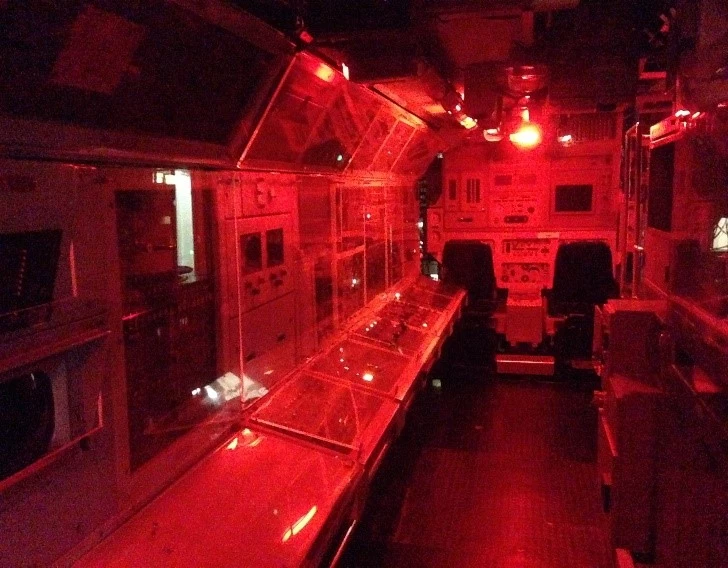





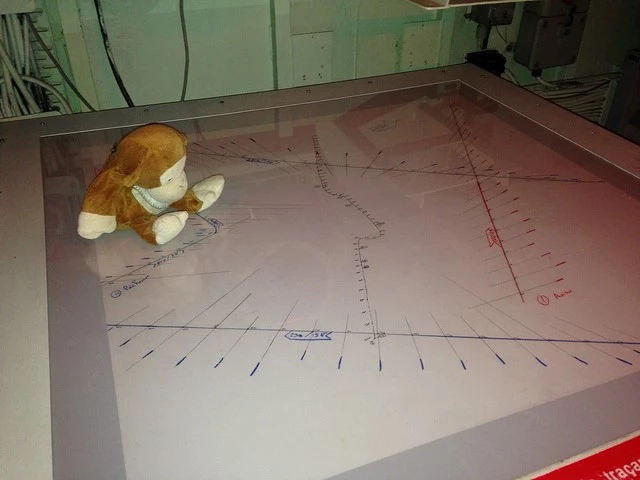

Navigating – Le Redoutable






How do you work out how far you can go in a set time? Are you any good at maths because you will need to be!
Using two rule sets, either using a 3-minute rule or a 6-minute rule (the 6-minute is more commonly used).
The 3 Minute Equation on Submarines
Take the speed of the ship, multiply by 100 giving you the distance in yards. For example, a ship travelling at 5 knots x 100 will in 3 minutes travel 500 yards.
The 6 Minute Equation on Submarines
The 6-minute rule is a bit more complex, the speed of the ship divided by 10 gives you the distance in miles. A ship travelling at 5 knots/10 in 6 minutes will travel half a mile and of course you can multiply this by ten to give you five miles in one hour.
The Crew’s Mess
It’s spread over two decks with the plush officer’s mess being below and the cramped regular crew quarters above. It is also here where you would gather to eat your meals, socialise, attend church or maybe watch a movie.
It is widely known the submarine service of any navy has the best food but is it any wonder being stuck at the bottom of the sea for months at a time? Could you do it?
The Torpedo Room – Le Redoutable
And now we have come as far forward as we could go, reaching the torpedo room. Le Redoutable is not like her smaller cousins the attack boats, she doesn’t look for trouble, instead she will hide in the deep. Her torpedoes and missiles are for self-defence and firing them will give away her position.
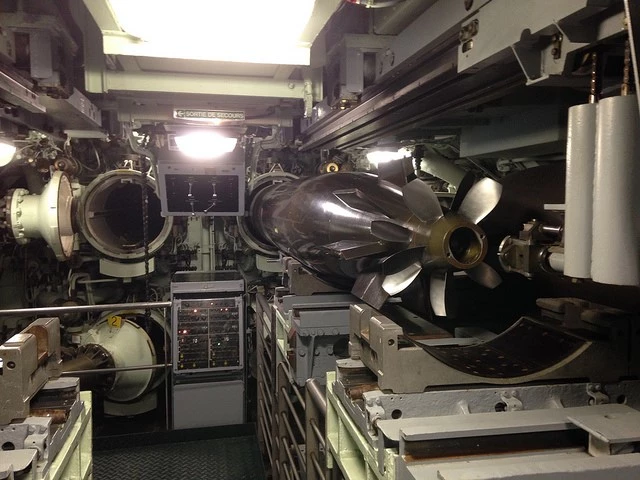



The Exterior of Le Redoutable
Unlike the teardrop shape that other navies use, the hull form of Le Redoutable is rounded almost like a traditional ship. Outside you get a true sense of size and walking under her bulk you realise that this submarine is a truly incredible design.


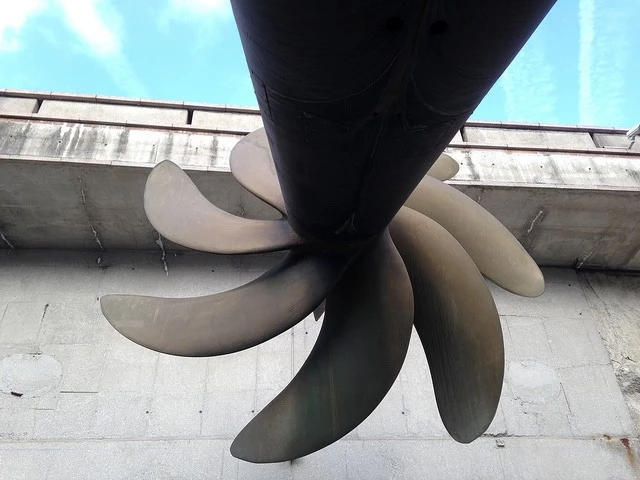

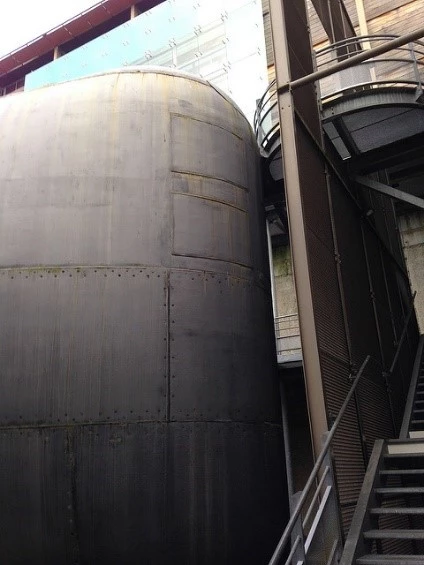

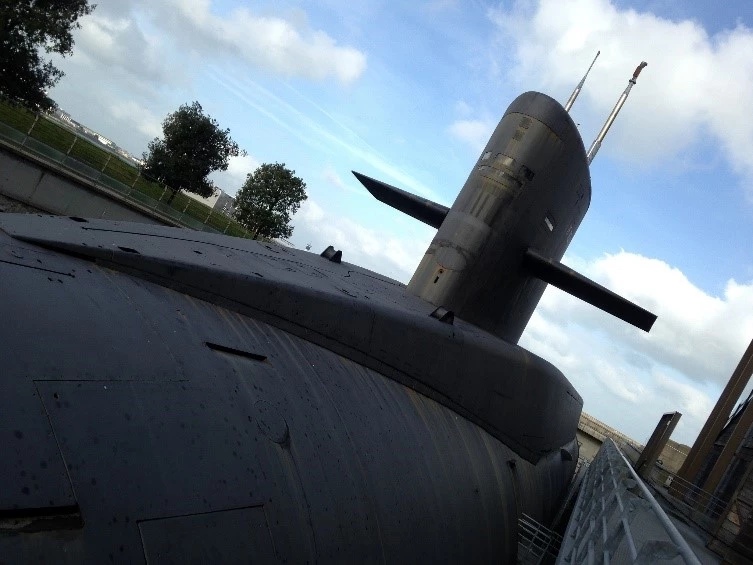

For anyone who loves ships or submarines this one boat is a must view, she is unique as well being the only boomer open to the public. I highly recommend a visit here she really is a joy to view.




If you have enjoyed my tour of Le Redoutable, be sure to check out my other maritime articles!